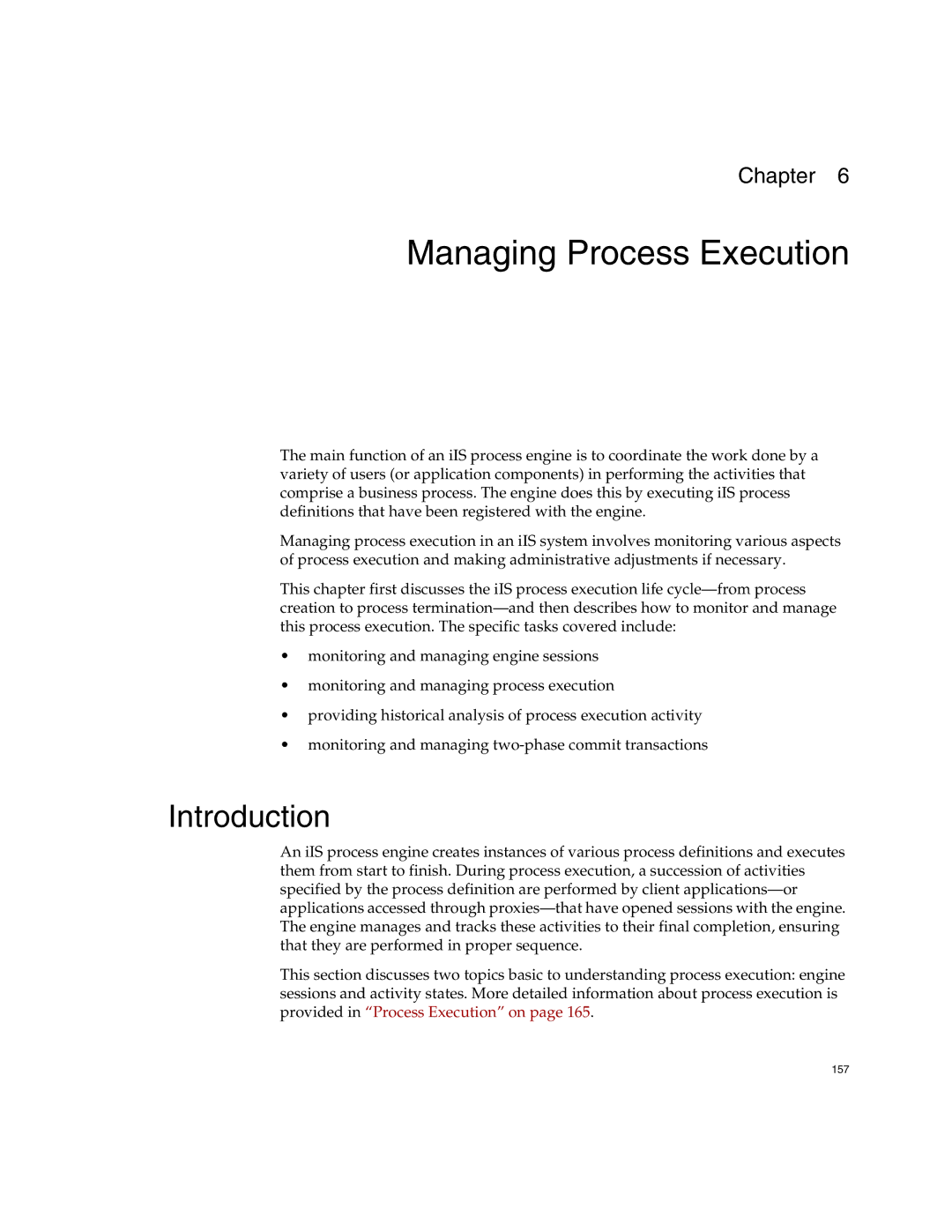Chapter 6
Managing Process Execution
The main function of an iIS process engine is to coordinate the work done by a variety of users (or application components) in performing the activities that comprise a business process. The engine does this by executing iIS process definitions that have been registered with the engine.
Managing process execution in an iIS system involves monitoring various aspects of process execution and making administrative adjustments if necessary.
This chapter first discusses the iIS process execution life
•monitoring and managing engine sessions
•monitoring and managing process execution
•providing historical analysis of process execution activity
•monitoring and managing
Introduction
An iIS process engine creates instances of various process definitions and executes them from start to finish. During process execution, a succession of activities specified by the process definition are performed by client
This section discusses two topics basic to understanding process execution: engine sessions and activity states. More detailed information about process execution is provided in “Process Execution” on page 165.
157
